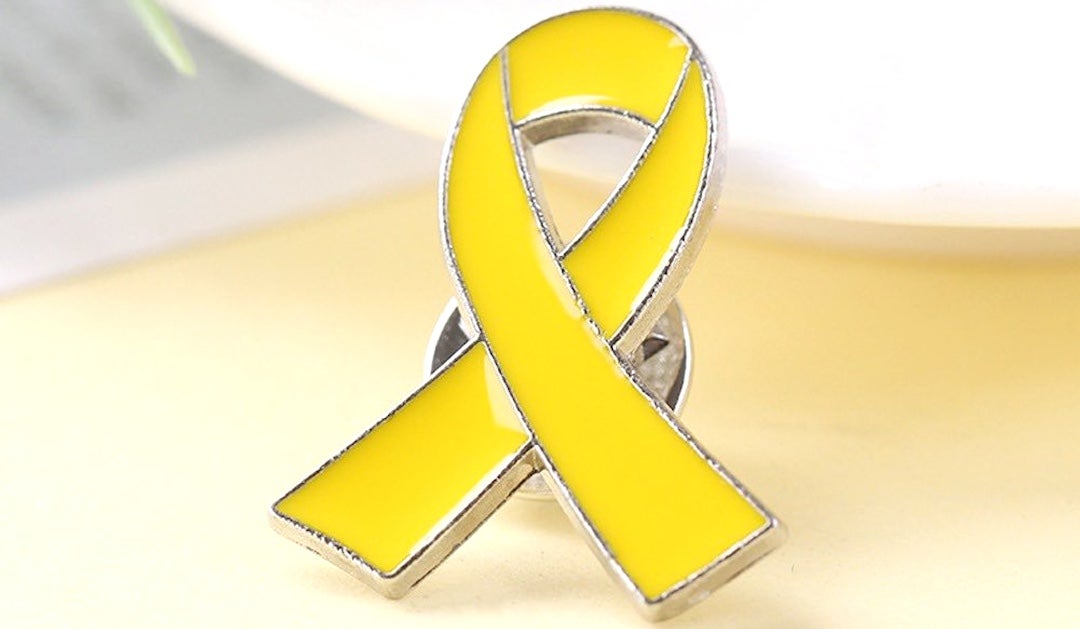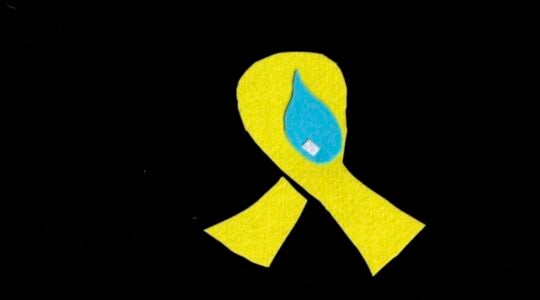Like most synagogues, Congregation Beth El in South Orange, New Jersey added new rituals after the Oct. 7, 2023 attacks that killed 1,200 in Israel, saw another 251 taken hostage and launched a grinding war between Israel and Hamas.
The Conservative congregation hung a “bring them home now” sign out front on behalf of the hostages. Rabbi Jesse Olitzky added the “Acheinu” prayer for redeeming captives to the weekly Shabbat service, and each week read the biography of a hostage. As the war raged on, the congregation sang songs of peace.
There and elsewhere, congregants wore yellow hostage ribbons and pins on their lapels, and dog tags with the names of the missing. Some families lit extra candles on Shabbat. Rachel Goldberg-Polin, whose son Hersh would eventually be listed among the dead in Gaza, popularized the wearing of a piece of masking tape on which she wrote the number of days since the hostages were taken.
This week, as the last 20 living hostages were returned to Israel as part of a cease-fire deal between Israel and Hamas, many Jews are relieved to be ending these rituals — even as they question whether it is right to do so and wonder how to channel their prayers and practices toward whatever comes next. Twenty-four deceased hostages are believed to be in Gaza, and even as soldiers return home and Gazans reclaim what’s left of their former lives, an enduring peace seems far away.
At Beth El, the Acheinu and lawn sign will stay in place until the bodies are returned. In the meantime, Tuesday night’s celebration of Simchat Torah will be a chance to experience a sense of relief members haven’t felt in two years.
“Like so many we haven’t been able as a people to move forward and get to Oct. 8 until the hostages came home,” Olitzky said Monday, hours after Hamas released the living hostages. “And now there is a sense of being able to exhale and breathe and, God willing, to move forward, to rebuild, and for all Israeli citizens and for Palestinians to have opportunities to build peace.”
This week, rabbis and Jews in the pews are asking if it is time to move forward.
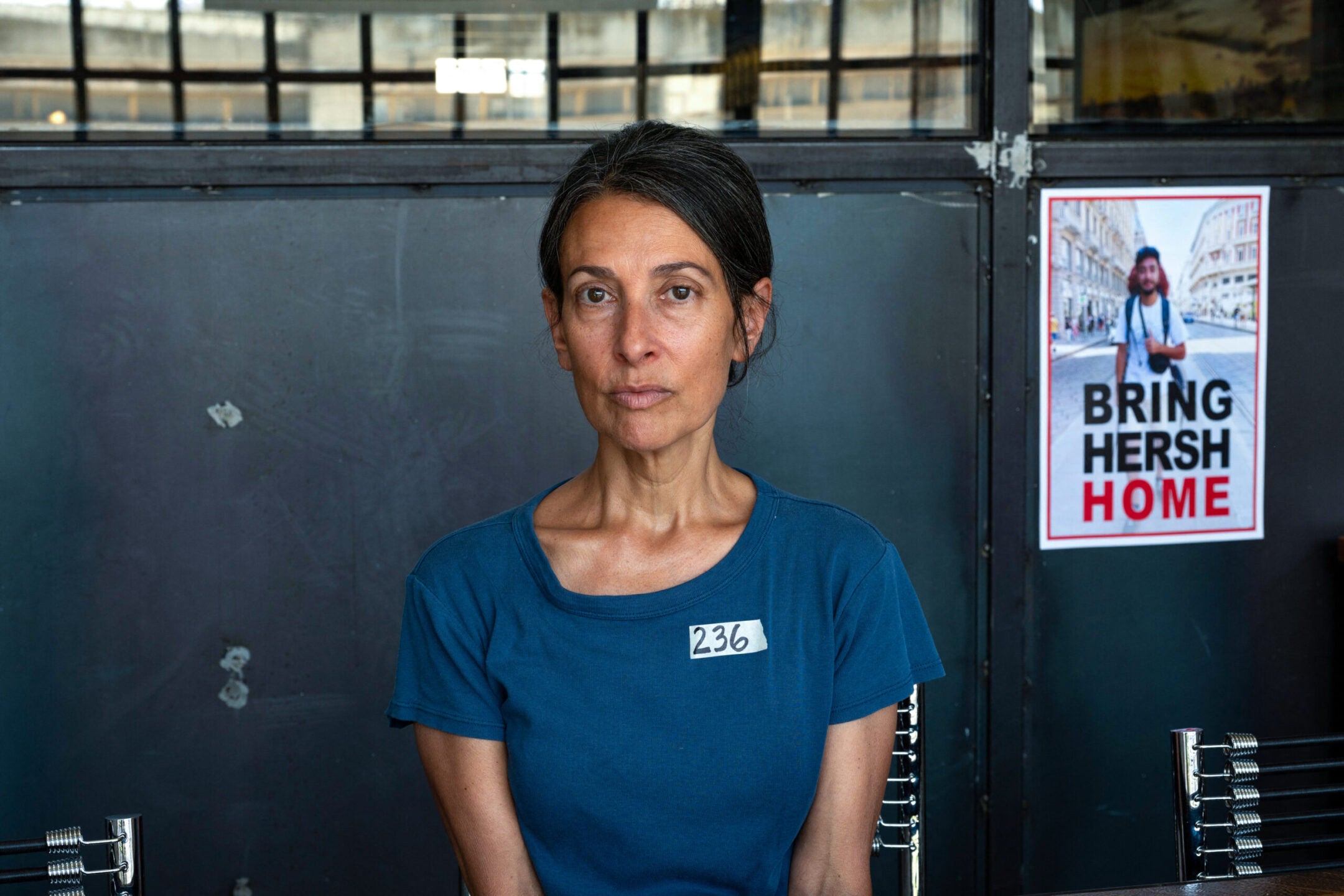
Rachel Goldberg-Polin, the mother of Hersh Goldberg-Polin, who was taken hostage by Hamas on Oct. 7, wears a strip of masking tape indicating the number of days that had passed since her son and over 200 people in Israel were taken hostage, May 29, 2024. (Ahikam Seri/AFP via Getty Images)
Rabbi Yael Ridberg, the recently retired spiritual leader of Congregation Dor Hadash in San Diego, said she would remove the ribbon and dog tag she wears when the bodies of the deceased hostages are returned.
“I look forward to tucking them away, but not disposing of them,” she wrote in response to a journalist’s query. “I will stop wearing them when all the deceased hostages are returned. These are keepsakes of a time worth remembering, as hard as it has been for the last two years.”
Ronit Wolff Hanan, the former music director at Congregation Beth Sholom in Teaneck, New Jersey, said she is not sure what to do with the ribbon pin and dog tags she’s worn for most of the past two years. She’s torn between “this unbelievable release and relief and joy,” and sadness that there are still 24 bodies yet to be returned.
“My whole thing is, well, what do we do know?” said Wolff Hanan, a dual U.S.-Israeli citizen whose son served over 300 days in the Israeli reserves during the war. “I keep thinking about the long, difficult road all of these hostages and families have ahead of them, and it’s just unimaginable. But also I’m thinking about, when it is really over? We don’t know if this is the dawn of a new era or if we are going to go back to the same old, same old.”
Her partner, Rabbi Eli Havivi, offered his own solution to a similar dilemma: In synagogue on Monday morning, he wore his hostage dog tags, but covered with blue painter’s tape, in order to suggest that “it’s over, but it is not over.”
On a Facebook page for Jewish women, a number of members spoke of their reluctance to stop lighting extra candles. Some felt that if they did, it would break a kind of spiritual commitment, or might suggest that they’ve given up on the freed hostages who will continue to have mental and physical challenges. Some referred to a passage from Talmud (Shabbat 21b) that extends the metaphor of the Hanukkah candles to suggest that someone should always add light, not subtract.
By contrast, the comic Periel Aschenbrand wrote that she was eager to take off the button that she’d been wearing in solidarity with Omri Miran, a hostage abducted in front of his wife and two children on Oct. 7. “I can’t wait to be able to take it off tomorrow, and for Omri to be reunited with his daughters and family,” she wrote Sunday on Instagram.
Alyssa Goldwater, an Orthodox influencer, wrote that she too is “really looking forward” to taking off the yellow ribbon pin she’s worn over the past two years, but that removing doesn’t mean forgetting.
“When you remove a pin, the tiny holes never fully go away,” she wrote on Instagram. “They will remain and serve as a reminder that we will never forget what has happened to us over the last two years. We will never forget who stood by us and who stood soundly or against us. The holes will be tiny because we pray that the hostages will be able to eventually heal and live their regular lives again, where the unimaginable travesties they’ve been through won’t even be noticeable in the human eye, but the holes will remain, because this is a part of us now.”
Long before Oct. 7 led to a torrent of new practices, Jews altered their prayers and rituals in tune with current events, with some changes handed down from rabbis and others bubbling up from the “folk.”
Some changes stick — like the Av HaRachamim memorial prayer, composed in the Middle Ages for those who perished in the Crusades — and others fall away. In the 1970s and ’80s boys and girls celebrating their b’nai mitzvah “twinned” with Soviet Jews unable to emigrate. Adults wore silver bracelets with the name of these refuseniks, and put them away when the emigration restrictions fell.
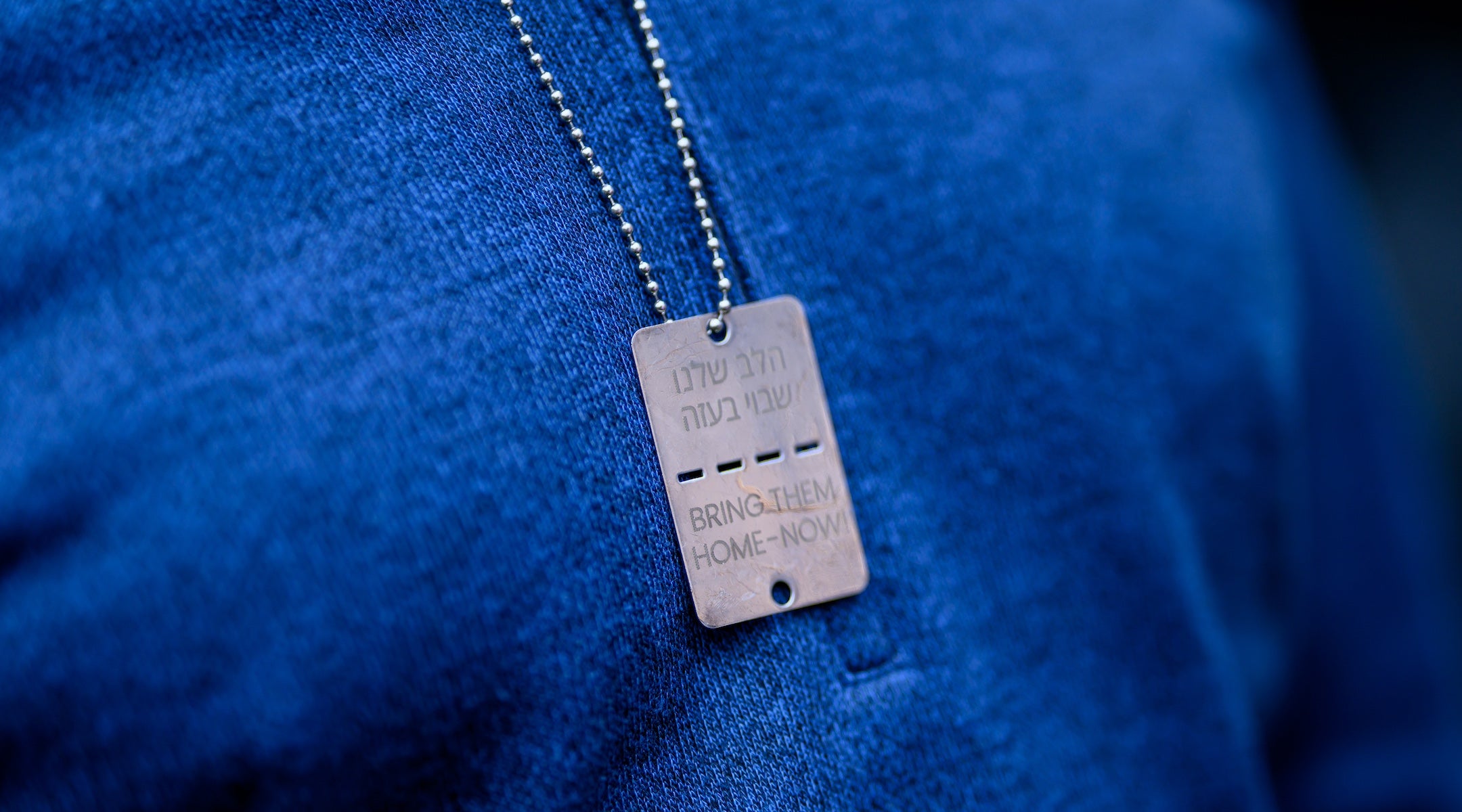
A man wears an IDF-style “dog tag” during a fundraiser in Westport, Connecticut, May 16, 2024. (Roy Rochlin/Getty Images)
The additions and changes that persist usually speak to other events, the way Av HaRachamim has become a weekly reminder of various Jewish tragedies. In general, however, a prayer or ritual that responds to current events “should have a theoretical timestamp for when it exits stage left, even if we cannot always know when that time will come,” Rabbi Ethan Tucker, president and rosh yeshiva of Hadar, explained in a Facebook post discussing the transition away from Oct. 7 practices. “Without that foresight and planning, the addition either straggles on, eventually becoming a kind of exhibit in the gallery of prayer, or it simply fades away when monotony and detachment have gotten the better of it.”
How did you, your synagogue ior Jewish institution mark the release of the hostages? Drop us a line at newsdesk@jta.org.
The Jewish calendar itself seemed to conspire in the spiritual turbulence of many Jews: The hostage release came on the eve of Israelis’ celebration of Simchat Torah — and the second anniversary, on the Hebrew calendar, of the Hamas attacks.
The holiday is meant to be a day of unbridled joy. A centerpiece of Simchat Torah is the hakafah, when congregants dance with and around the Torah scrolls
Last year, congregations struggled with how to match the happy themes of the holiday with the one-year anniversary of the worst attack in Israel’s history. Olitzky said his congregation began last year’s Simchat Torah festivities with a “solemn” hakafah, where congregants sang Israel’s national anthem and a somber Hebrew song while standing still. Olitzky said he took solace at the time in the words of Goldberg-Polin, who said, “’There is a time to sob and a time to dance’ and we have to do both right now.”
And while the release of the hostages is also tinged with sadness — for the lost years, the captives who didn’t make it, the suffering still to come — many will use the holiday as a celebration of deliverance and gratitude.
The release of the hostages, Olitzky said, will “allow Simchat Torah to be that — the holiday when we are supposed to have so much joy. Last year it was difficult to find that joy on Simchat Torah. I truly believe that we will have a greater opportunity in the days ahead to sing and dance.”
Adat Shalom, a Reconstructionist synagogue in Bethesda, Maryland, will use Simchat Torah to celebrate the hostages’ return by ending another common practice since Oct. 7: a chair left empty on the synagogue’s bima, featuring the image of a missing hostage.
During the dancing on Simchat Torah, marked on Tuesday night outside of Israel, the congregation will bring the chair and use it to lift up members wedding-style. “We have a lot of people in the community who are really close with the Hostages and Missing Families Forum in Washington,” said Rabbi Scott Perlo. “We’re going to take that very chair, and take it from its depths and lift it up, and make it the centerpiece of our joy.”
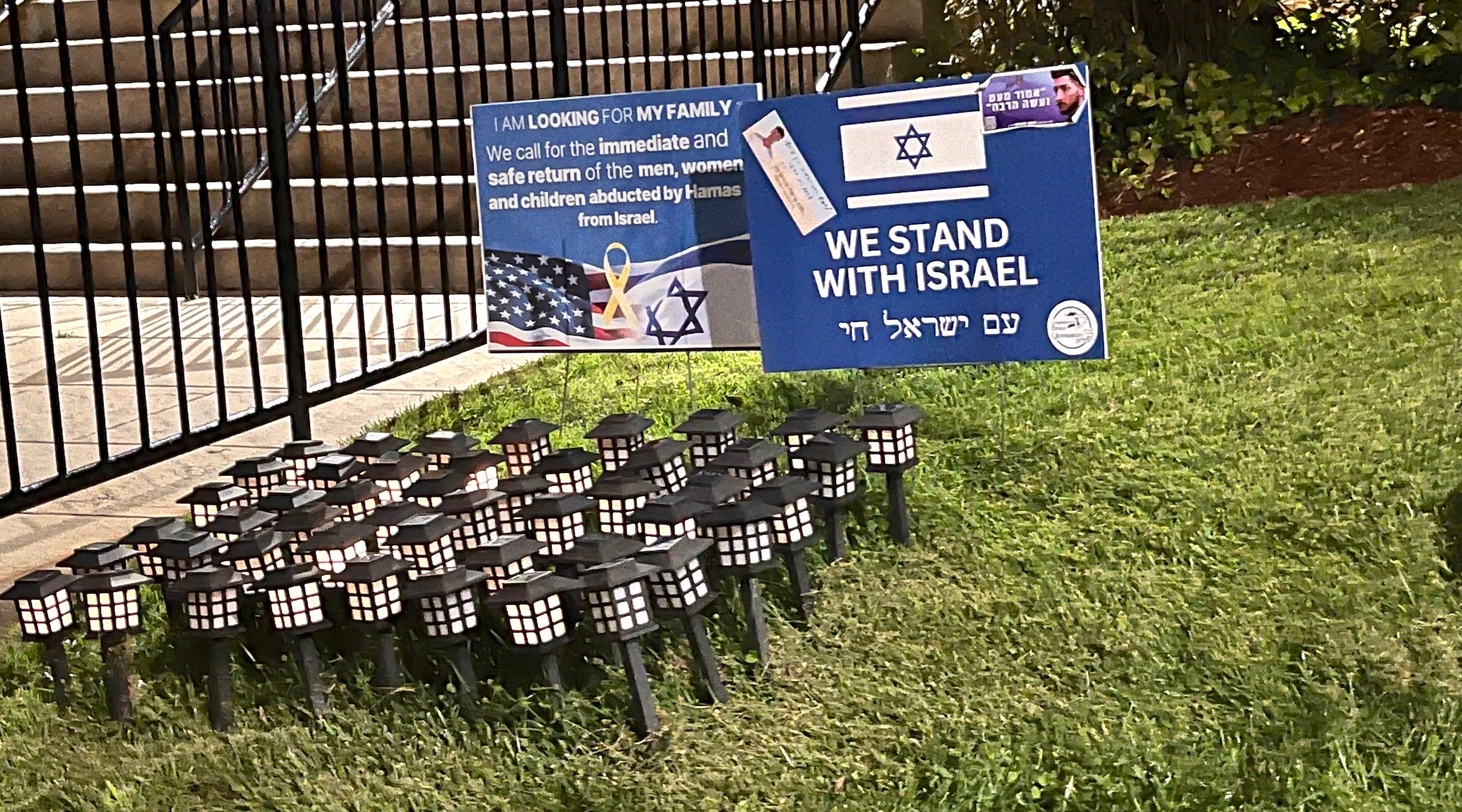
A synagogue in Teaneck, New Jersey displays lanterns representing the hostages still alive in Gaza and the bodies of those who were also slated to be returned under a deal between Israel and Hamas, Oct. 8, 2025. (JTA photo)
Adat Shalom rotated in a number of special prayers and readings over the past two years, acknowledging, Perlo said ruefully, that “there’s so much to pray for,” including “the hostages, the safety of our family in Israel, the safety of people in Gaza,” and the state of American democracy.
He understands that some congregants may be wary of letting go of the new rites and prayers — perhaps afraid that if they don’t keep up the tradition, the horrors that prompted their prayers will only return.
“So what I would say to them is some version of, ‘Yes, don’t let it go completely, but let it transform into something new,’” said Perlo.
Rabbi Felipe Goodman of Temple Beth Sholom in Las Vegas, Nevada also plans to incorporate a ritual of release and transformation during Simchat Torah celebrations on Tuesday night. He’s asking congregants to bring their yellow pins and dog tags and place them on an heirloom Torah cover. “This cover will be dedicated as a memorial and displayed at the entrance of our Temple, so that every time we walk through through Our Temple’s doors, we will remember what happened on Oct. 7, 2023,” he wrote in a message to members.
On Sunday, Hanna Yerushalmi, a rabbi based in Annapolis, Maryland, shared a poem on Instagram, called “Yellow Chairs” that imagined a near future in which hope will transform the fraught symbols of Oct. 7 grief and remembrance. It reads in part:
Empty chairs will be
saved for friends arriving late,
and tape will be
tape again,
and hostage necklaces
will be put away, forgotten in drawers.
and Saturday night will be date night once again.
JTA has documented Jewish history in real-time for over a century. Keep our journalism strong by joining us in supporting independent, award-winning reporting.
